Let me walk you through the typical, speedy course creation process.
- “I’m so sick and tired of my clients making the same mistakes.”
- “I’m so exhausted coaching folks 1:1. Wow, these mistakes would make great content for a wonderful course!”
- “I’m just going to create a course to help my clients correct those mistakes!”
- Great. Let me brainstorm…. (1 hour later)
- Bingo! I’ve got my course outline! All of the main mistakes in one course.
2 months later… So why is this course not selling?
Often when you begin crafting a course, you start from your own expertise, not that of your client’s. You believe that this topic would be right for your participants, so on you go to create multiple videos and put them together into a collection.
When you package your expertise and put it online, there’re two things authors struggle with the most:
- Narrowing down the topic (by addressing the core of the course, i.e. your client’s pain – and no, those aren’t the mistakes that they make).
- Keeping it small, simple and actionable.
If you have a course you’re working on, this post is a must. This information has changed the way I approach course and program creation, which in turn made a profound impact on my clients. Ultimately, this has helped me work smarter by moving away from the 1:1 format.
So let’s dig in and see how we can reshape our first course rough draft to make it small, sexy and ultimately sellable.
What’s the core of your course?
In her blog post on course creation, Breanne Dyck notes about course creators,
“So used to thinking about their course from the perspective of what they know, they find that they’re unable to break free and really pay attention to what their customers think they want. And when we try to think like our customers, we end up falling victim to the curse of expertise.
Unable to truly adopt a beginner’s mind, we overcomplicate things.”
According to her research, there are 5 fundamental reasons why anyone would like to consider and even buy a course, and ironically, that has nothing to do with the course topic.
Universally all people want to hear from an expert because they want to
- save time,
- make money,
- save energy,
- save (or not lose) money now or in the future,
- feel better about themselves.
What that means, practically, is that we might be thinking that our clients want a course that will teach them specific sets of exercising routines (for instance), but they want to learn how to exercise and stay fit (feel better about themselves) without spending hours at the gym (save time).
We may think that our clients want a course that will teach them how to use Grammar, but in fact our clients want to spend less time learning Grammar and still speak presentably (feel better about themselves).
Thus the mistakes your clients make are irrelevant as your course material. Yes, I finally said it! The mistakes/struggles are just the symptoms of the disease, and your goal isn’t to treat the symptoms but to get to the core and uncover the pain. You need to ask yourself why they’re making these mistakes and how much they need to get them corrected.
How to make your #online #course small, sexy and sellable: a guide for #entrepreneurs who #teachClick To Tweet
How to understand your client’s pain.
So in order to find that pain point, we need to start with what our clients think they need, not what we think we can give them. This is a crucial distinction that will either make your course into an incredible learning experience, or contribute to the general noise that online courses create.
The easiest way to nail down your customer’s “pain” is to interact with them and get to know what struggles they face.
The mistake we make is assume that there’s only one way to find that out: a survey. But there’re different ways of going about it, here’re some ideas:
- Asking a question on the forum (please don’t preface it with “I’m creating a course and have to do market research, just ask a specific question).
- Writing emails to some of your most active subscribers (ask them if there was one thing they could learn from you what it would be and why).
- Paying attention to the comments to your blog posts, videos, podcasts (so not asking anything, but just “listening”).
- Paying attention to what your potential customers are saying (reading related product/course reviews, forum questions, random comments – read this fascinating post).
Once you begin paying attention, you will be taking extensive notes and discovering some things that you never thought your customers needed. You can also connect it to your personal experience, where applies, but such research will help you go back to being a beginner, which most “experts” forget after they learn something.
Explaining Things in Simple Terms.
So thinking like a beginner means knowing the beginner’s pain. But knowing isn’t enough. Another important aspect of it is being able to explain it in simple terms, not some technical lingo.
A great example for me on when not to use lingo is my experience of signing up for internet service. No matter where I’ve lived, Internet providers tell me that if I sign up for this package I will be gaining this many gigabytes.
What are gigabytes, exactly? To heck with them! Tell me how many people I can have on my conference call without glitches. Tell me what that means in terms of uploading videos.
Tell me how much it will affect my presentation, and whether I will look like a human or a hiccuping robot. Tell me in a language I understand, not a language I have to learn in order to understand you.
You think Internet companies are the only ones who can’t explain to a layman? Check out this Vimeo business plan description:
How do you make your course small?
As it is the characteristic of great wits to say much in few words, so small wits seem to have the gift of speaking much and saying nothing. ~ Francois de La Rochefoucauld
Don’t think you’re done once you’ve nailed down the pain and found the right words, for you have another huge monster to face. The gremlin you will be tackling next is volume.
Generally experts have no problem making a 300-page manual + 30 1-hour videos to a course. It’s only customers who have issues going through it.
Reducing the volumes of content to small and actionable minimum is a must when you decide to craft an incredible learning experience.
Reducing the volumes of content to small and actionable minimum is a must when you decide to craft an incredible learning experience. Click To Tweet
Somehow we think we’re cheating our audience out of their money if we create 10 10-minute video tutorials + 10 1-page worksheets instead of hour-long productions with voluminous manuals that Tolstoy would envy.
“But I have to make sure they know,” goes the all-familiar tune. Yet, the customers don’t just want to know, they want to apply so that this information changes their life now.
Check out my client’s review on my 3-week Accent Training Boot camp (with just 9 10-minute videos for content) that I run on a few times a year. Pay attention what’s important to her (I’m highlighting the parts):
I loved Elena’s bootcamp. It’s actionable! Which fits perfectly the student I am. I have a business to run and cannot spend hours and hours reading “accent books.”
I’m always looking for techniques that I can implement instantly and “see what happens.” I did this boot camp because I was in the middle of recording a project and the difference before and after is just amazing. ~ Yirlene
Make it easy for them to go through your materials (have a sense of accomplishment) and apply the concepts right away.
Here’re the steps to take if you wish to reduce your volume:
- Choose 1 pain that persists from comments and surveys (i.e. don’t turn this course into an exhaustive monster).
- Ask yourself why the person struggles with it.
- Develop steps to help this person overcome the pain (here’s a place to show your expertise).
- Make explanations small, simple and clear.
- Add actionable content.
For instance, your customer struggles with finding time to exercise. Obviously, she needs to know how to exercise, but that’s not the pain. The pain is not being able to find the time.
That in turn will make you adjust your content to help her first plan her time, and second, choose the routines that will be most effective yet less time-consuming. Maybe you’ll want to encourage her to exercise throughout the day as an option and adopt a life as an exercise motto?
Ready to sell a course but struggling with the launch process? Check out my mini-course:
How do you keep it actionable?
The best way to keep it actionable is to create actionable content. Here’re some characteristics (check out Breanne Dyck’s Beyond Satisfaction book to get deeper):
- Keep your tutorials short (10-15 minutes).
- Add worksheets and workbooks with questions and real-life application tips.
- Add tracking sheets to help participants go back and analyze their progress.
- Facilitate feedback, make it easily accessible and format it differently.
- Develop metrics to assess progress (Ask people how much they’ve learned, what they need help with, where they struggle).
Making it actionable is a challenge for the author (you), as the focus shifts from what you want to include in the course to what your customer really needs. The process forces you to step over your “curse of knowledge” and think like a beginner.
Make it Sexy. Make it Yours.
One of the meanings of the word “sexy” is appealing, intriguing and stimulating.
I believe only you can make something truly appealing for your audience. Otherwise it will be fake and … well… eventually it will ruin your brand.
And yet…
You look around and find courses that sell like hot cakes, and you wish you could do the same.
So instead of digging deeper and sweating (and crying) a bit (after all, that’s what your potential client goes through when they’re looking for your course) you choose to take a shortcut.
You take those beautiful words and make them yours. You might tweak them a little, of course.
After all, your clients don’t read that blog or that sales page. Who’ll know?
The thing is, the reason that course description sounds so sexy to you is because the author has done some thorough digging and a *helluva* lot of writing.
You may even look at this blog and say, “Heck, I’ll never write like that!”
Well, let me put it into perspective. I’ve been writing weekly for over 29 months (almost 2.5 years).
- That is 100+ blog posts (just on this blog – I have another one).
- at least 400 hours of writing (about 25% of all of my posts have no comments or shares)
- at least 174,000 words
- + Emails, webinars, training sessions, workbooks, etc. (Check out Smart Teacher’s Library).
Many of the 174k words were rough and clunky. They were breaking through the asphalt and bringing me pain. Today these words bring me clients.
Don’t take shortcuts, no matter how beautiful someone else’s words are. They will ruin you. Use your imagination. Your creativity.
Take what you know, however clunky, put your heart into it, dig deeper into your clients’ pain, and turn it into poetry.
Today’s takeaways:
- Make your course small: choose 1 pain. Think like a beginner. Use simple language. Focus on your client.
- Make your course sexy: make it authentically yours. Sweat over those words. That pain is good for you in the long-term. Use your voice to change the world, not someone else’s, no matter how it sounds.
- Make it sellable: your course will sell if it’s actionable and transformative, not informational. Ask yourself how to change your client’s life.
~ What are you afraid of when it comes to course creation? Please share in the comments and if you enjoyed this post, would you take a minute and post it on your favorite social media?

 Welcome to my nook where *Big Magic* happens. My name is Elena Mutonono, I help small business owners package their services as digital products and sell them online. I want you to work smarter, not harder. Increase your impact beyond your current face-to-face clients. Grow your business as you reach more people all over the world.
Welcome to my nook where *Big Magic* happens. My name is Elena Mutonono, I help small business owners package their services as digital products and sell them online. I want you to work smarter, not harder. Increase your impact beyond your current face-to-face clients. Grow your business as you reach more people all over the world.



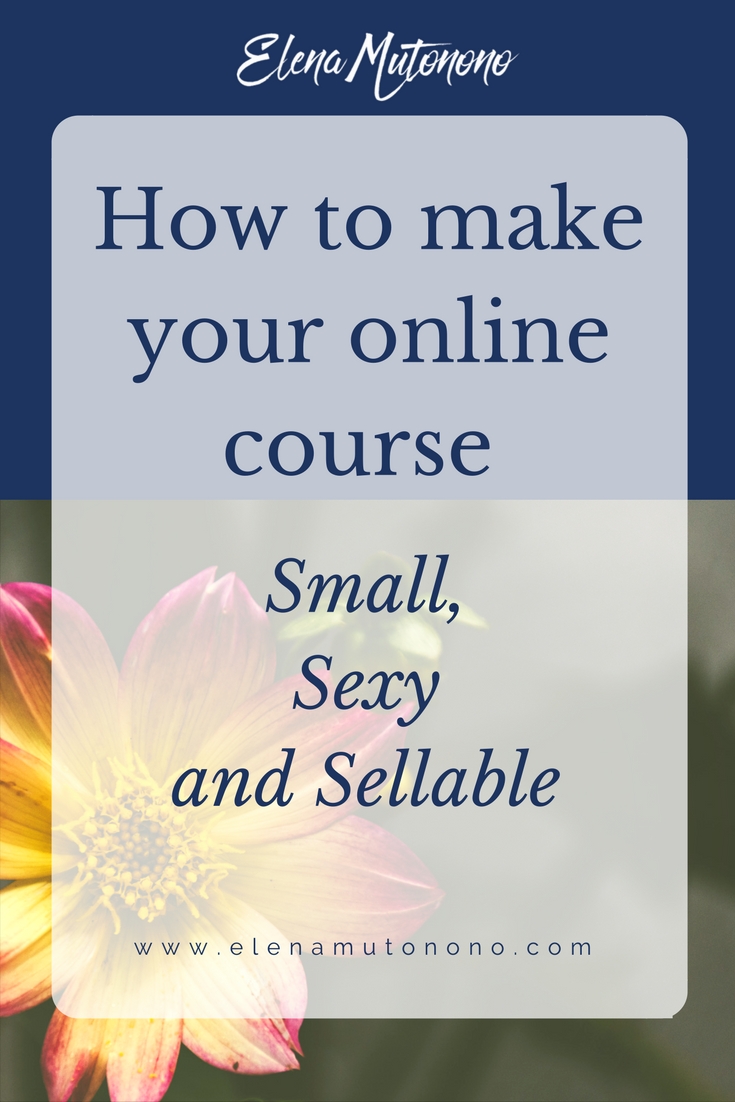

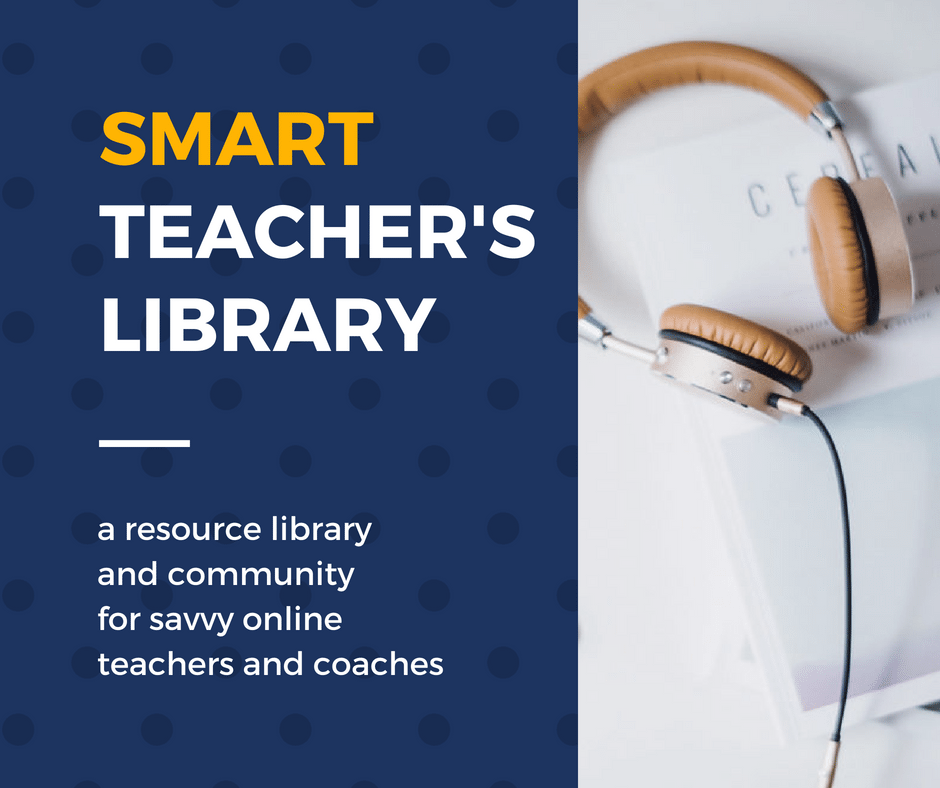
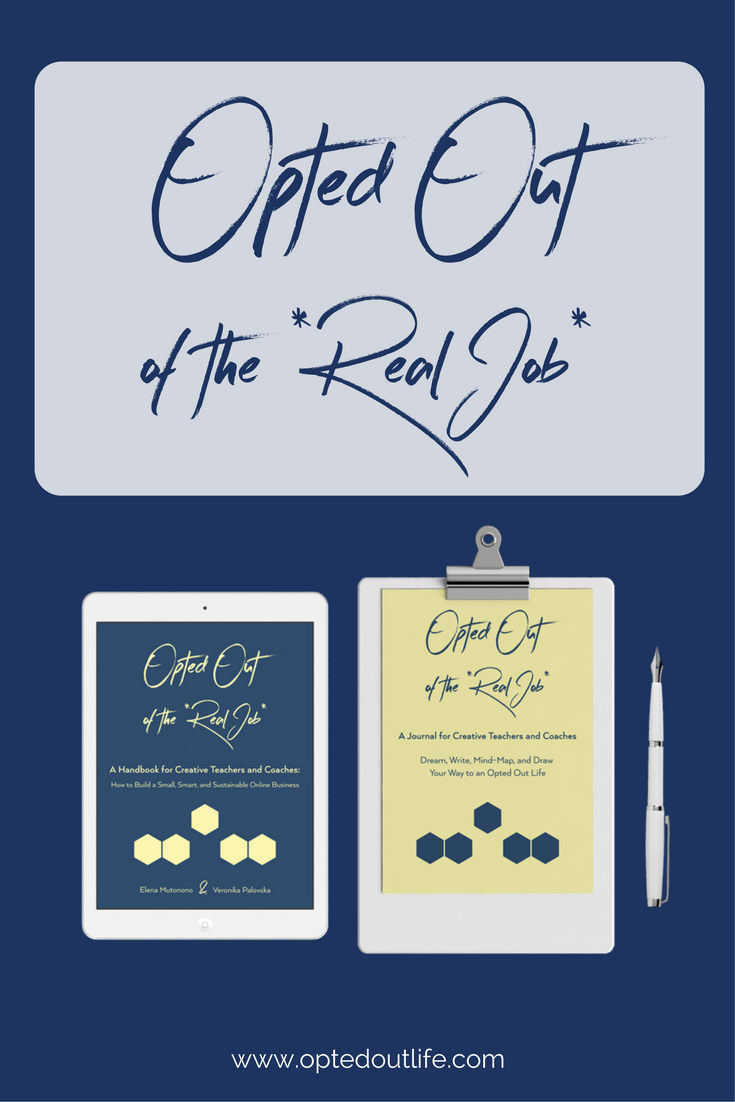

Hey Lena,
Thank you for this eye-opening post! I’ll share it everywhere because people need to read this!
I mean, I studied education, but I only learned about these principles a couple of years ago, when I started following Breanne Dyck. Before that, no one had ever told me that the question isn’t “What do I want them to know/what can I teach them,” but “what do they need to be able to DO” (after they work with me, read my article, finish the homework assignment, etc.). It totally revolutionized the way I teach.
But still, when inviting people to my first coaching program, I felt like a cheater. The program (as you know) has a minimum of content and it’s all about action. At least 80% of the time, my clients don’t read about (or watch videos about) writing, but they write. And – guess what – no one has ever complained about that. It’s the opposite. When we finish the program, their project is ready, and that’s all they wanted.
Similarly, in your Small Product Lab, I loved that I didn’t have to spend hours watching videos about MVPs and launching. I created and launched my product, and that’s what I wanted. If it wasn’t for you, it would have taken me months!
I’m bookmarking this post because I need it as a reminder. It takes a lot of confidence and courage to keep your course small. Also, it’s much harder to make the course small than to make it content-heavy. And that’s what I’m afraid of – to answer your question. That I don’t have enough confidence, courage, and experience to create a small, sexy course.
Thank you for writing this post, it helps a lot.
Veronika
I know exactly what you’re saying, Veronika. I’ve reviewed so many outlines for online courses, and I realize that most teachers feel the same pain. We feel like we need to include more content. What helped me to see it in a different way was asking myself, “Wouldn’t it be great to go through a program and actually scratch the project OFF your to-do list?” For instance, so many teachers tell themselves, “I need to build my list,” and then they never do it because there’s this hassle of setting things up and figuring them out. I thought what if I could help them go through that hassle and move forward with the actual list building? That’s how I created Express email list builder. Everything else after that was just a variation of that initial question, “What if people could actually DO something WHILE they’re in my program?” I believe just asking yourself that will make a huge change in the way we create and deliver content.
Hi Elena,
This is a wonderful and insightful blog post that “gets down to the nitty gritty.” I’ve been teaching English (mostly business English) for many years now and, I’m almost sorry to have to say it, the mistakes that my students make bother me more than they bother them!
So this idea of getting to their pain or central dilemma and then asking how I can help them in the most functional and efficient way really rings true with me. I’ll be thinking about these ideas for some time to come (and I went ahead and ordered Breanne Dyck’s book, for more food for thought).
Thanks for challenging some of my set ideas!
Fern
Fern, I love your sense of humor, and you are SO right! They don’t really care about their mistakes, and if we just take their mistakes and turn that into a course nobody will buy it because who wants to be correcting mistakes? There’s always a reason behind wanting to even correct mistakes. Is it because people don’t want to sound dumb? Is it because they want to avoid awkward situations? Is it because they want to sound more professional and confident in their business meeting? And based on that choice of pain we decide on the content to include, to empower our clients move closer to their vision, not just correct their mistakes. Thank you!
Elena, thank you for this amazing post. I have just printed it out and I will keep it next to me while creating my courses! It seems much easier to design a “ Tolstoy style” course than focusing on one real pain and create an actionable content without overwhelming the student. I find it really challenging, but your post help me to action on reducing the volume of the products I am working on.
A quote of Winston Churchill comes to my mind, when he was asked about the preparation time needed for speeches “It depends. If I am to speak ten minutes, I need a week for preparation; if fifteen minutes, three days; if half an hour, two days; if an hour, I am ready now.” I think it applies to courses creation as well, the smaller and more focused on one problem , the more time we need to put into preparation. No shortcuts, as you said, but the results are always worthwhile.
Wow, Ewa! Such a great quote, and so true. The bottom line is always, can we say what we want to say in fewer words than usual? Thank you for your insightful comment!
Elena, I will never thank you enough for your amazing posts – they are so helpful to me. I wish I could have a mentor like you) Being busy with so many other things, I am struggling to find time to go through your hub course, I am really enjoying it – in the middle of the night, in my smartphone on the go – everywhere, every time. Reading your posts I have finally released what my first course will be about. This is all due to you. I am getting to know my clients now.
Speaking about my fear, I would picture it as the method itself. I am only accumulating information right now and I am afraid – as many of of us(I guess) are – it will not work. But I will keep on trying to search for my big “AHA” moment. I have been experimenting a lot with my students, lets see what will happen…
Hey Natalya! So good to hear your feedback and the changes that are happening in the way you think – that’s the most important part that you won’t unlearn, ever. I will encourage you to keep trying, testing and implementing what you’re learning, no matter how scary it may be.
Regarding dealing with failure, I want to quote Seth Godin (from “Linchpin: Are You Indispensable”), “Learn from what you did and then do more. The only alternative is to give up and to become an old-school cog. Which means failing. Trying and failing is better than merely failing, because trying makes you an artist and gives you the right to try again.”
I’ve just bought the book, thank you for the recommendation, and I’ve just finished opted out and have the journal ready to start working through the activities so thanks for that too Elena! Reading it with the slight panic that I’ve done most of the ‘bad things’ already, set up websites and social media accounts without a strategy, working with so many students I can’t do the back of house work, but I can see clear paths to remedy all these problems so that’s alleviating the panic!
Emma, glad the book has been helpful. Let me know how things progress, also please share your aha-moments in our Opted Out group on Facebook. It’s free to join!